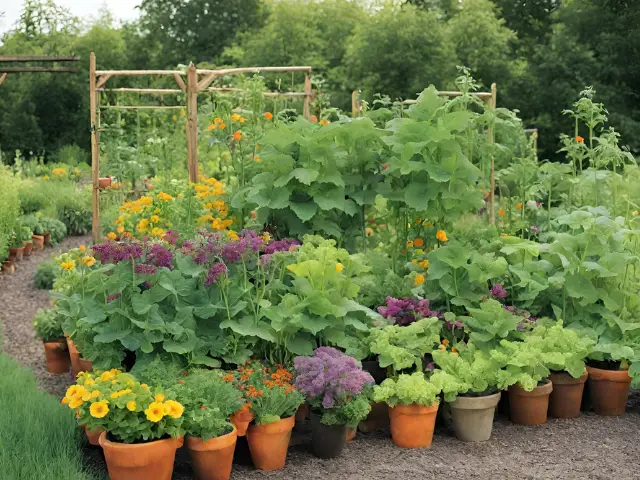Companion Planting in a Small-Scale Garden Setting
Gardening is not only a rewarding hobby but also a means to grow your own food and create a beautiful outdoor space. However, in small-scale gardens where space is limited, it becomes even more crucial to make the most of every square inch. One effective strategy to maximize productivity and create a harmonious ecosystem is companion planting.
Companion planting involves growing different plants together, where each plant benefits from the presence of the other. This age-old gardening technique has been practiced for centuries, and it can be especially useful in small spaces where every plant needs to contribute positively to the overall garden’s health and productivity.
One of the main reasons gardeners embrace companion planting is its ability to naturally control pests and diseases. Some plants release natural chemicals that deter harmful insects. For instance, marigolds emit a scent that repels nematodes, while strong-smelling herbs like basil and rosemary can keep aphids at bay. By intermingling these pest-repellent plants with your vegetable crops, you can reduce the need for chemical pest control methods.
Additionally, companion planting can enhance pollination and improve overall plant health. Some flowers attract beneficial insects such as bees and butterflies, which play a vital role in pollination. Planting flowers like zinnias or lavender near your vegetable plants can help attract these pollinators, resulting in better fruit set and increased yields.
Furthermore, companion planting can optimize space utilization by creating vertical growth opportunities or providing shade for sun-sensitive plants. For example, tall-growing plants like corn or sunflowers can act as natural trellises for climbing vegetables such as beans or cucumbers, saving valuable ground space. Similarly, growing leafy greens under taller crops provides them with shade during hot summer months when they are prone to bolting.
When planning your small-scale garden layout using companion planting principles, it’s essential to consider plant compatibility. Some plants have mutually beneficial relationships, while others can compete for resources or inhibit each other’s growth. For instance, tomatoes and basil are well-known companions since basil helps enhance the flavor of tomatoes and repels pests that commonly attack them. On the other hand, avoid planting onions near beans, as onions can stunt bean growth.
Remember to consider the specific needs of each plant when designing your garden. Group plants with similar water requirements together to ensure efficient watering and prevent over or under-watering certain crops. Additionally, consider the amount of sunlight different plants need and plan their placement accordingly. By understanding these fundamental requirements, you can create a microclimate within your garden that supports healthy growth for all plants involved.
Finally, don’t be afraid to experiment and observe how different plant combinations work in your garden. Note which combinations thrive together and which ones seem less harmonious. Over time, you will gather valuable knowledge about what works best in your specific small-scale garden setting.
In conclusion, companion planting is an effective technique for maximizing productivity in small-scale gardens. By carefully selecting plant combinations based on mutual benefits and considering individual plant needs, gardeners can create a thriving ecosystem where plants support one another in pest control, pollination, and space optimization. So whether you have a tiny backyard or just a few containers on a balcony, embrace companion planting to make the most out of your small-scale garden setting.













